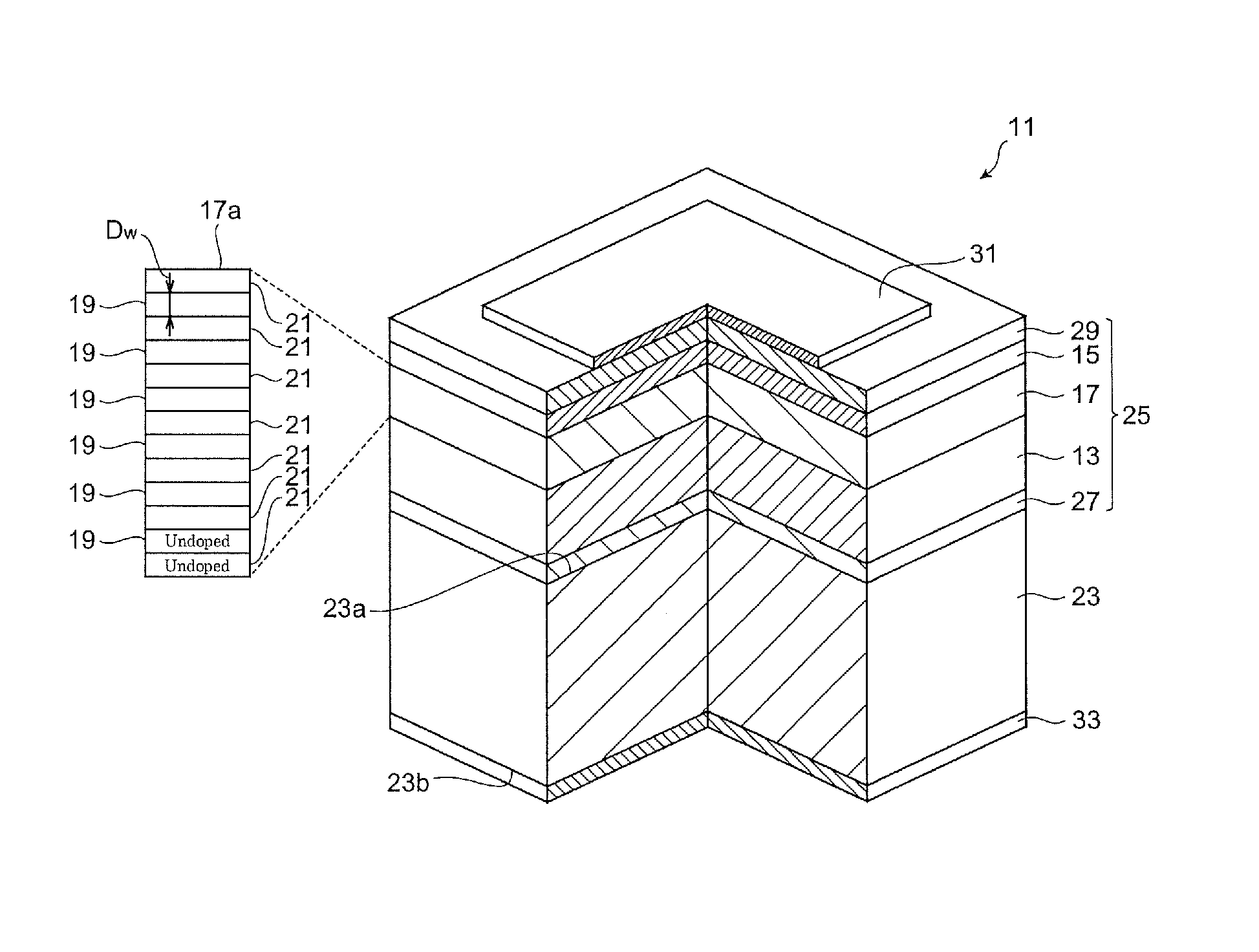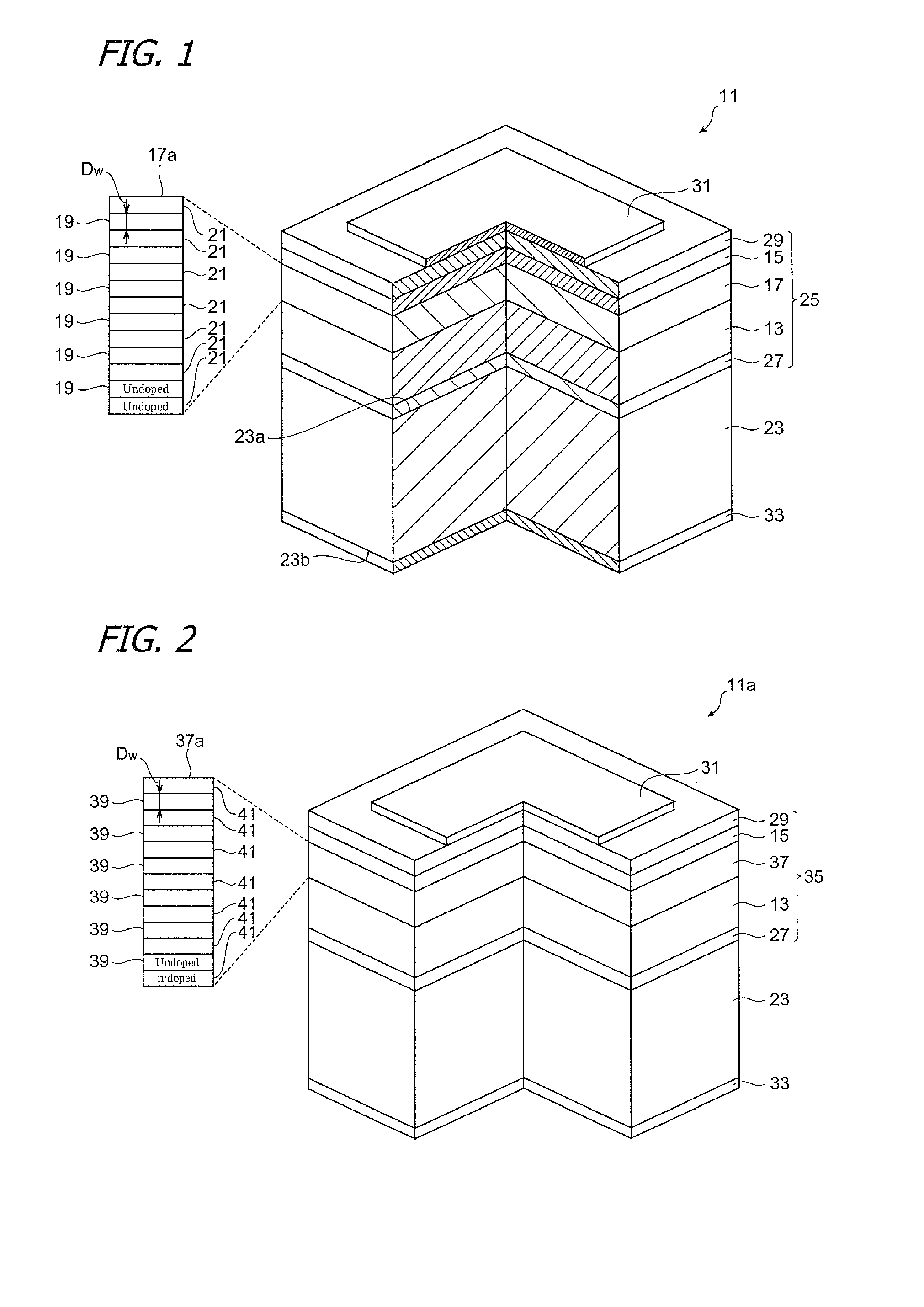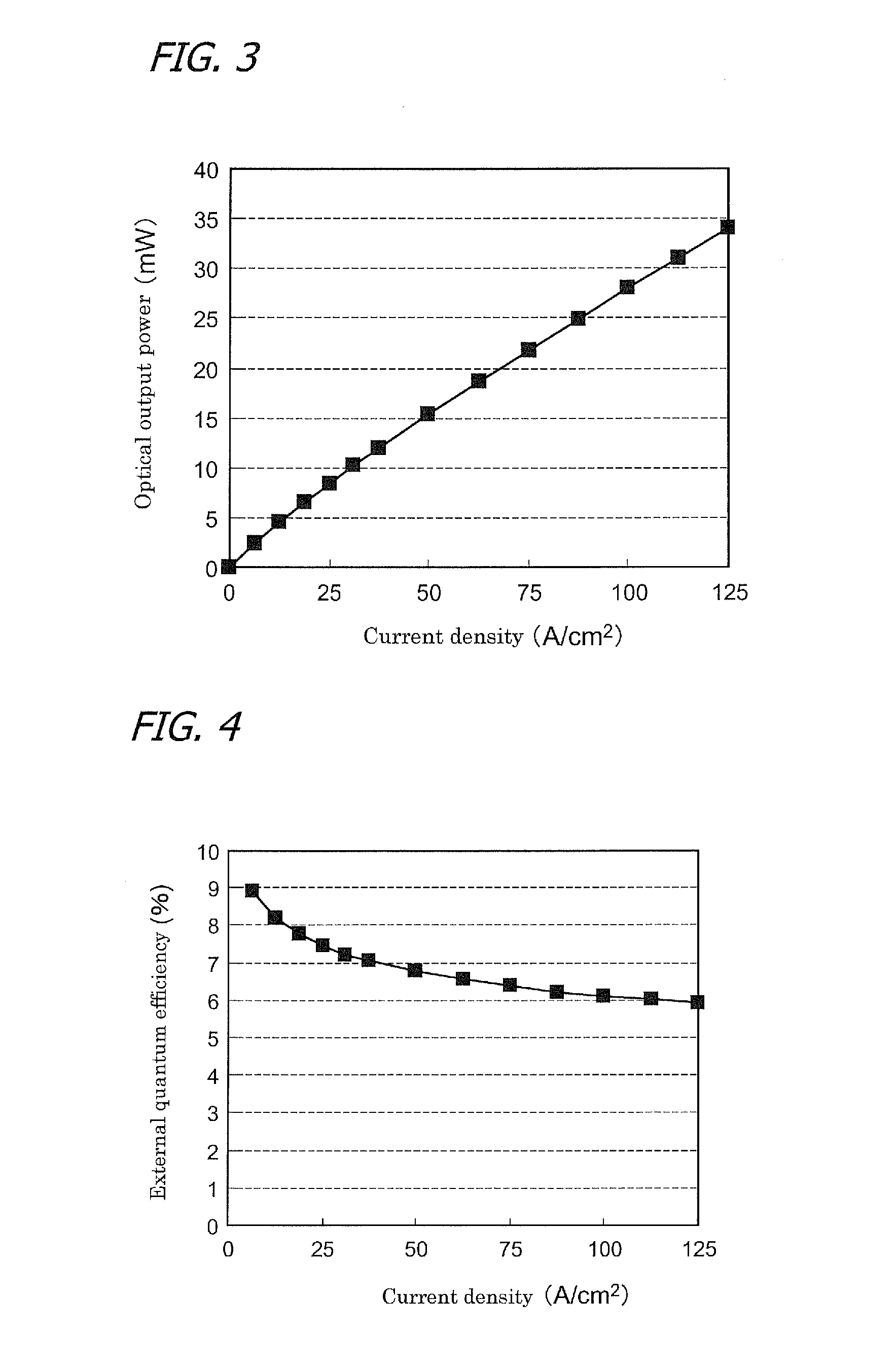Semiconductor Light-Emitting Device and Method of Manufacturing Semiconductor Light-Emitting Device
- Summary
- Abstract
- Description
- Claims
- Application Information
AI Technical Summary
Benefits of technology
Problems solved by technology
Method used
Image
Examples
embodiment 1
[0052]FIG. 1 is a drawing illustrating a semiconductor light-emitting device involving this embodiment. The semiconductor light-emitting device may be light-emitting diode, for example. A semiconductor light-emitting device 11 includes a gallium nitride cladding layer 13 of a first conductivity type, a gallium nitride cladding layer 15 of a second conductivity type, and an active region 17. The gallium nitride cladding layer 13 has a threading dislocation density of 1×107 cm−2 or less. The Active region 17 is provided between the first-conductivity-type gallium nitride cladding layer 13 and the second-conductivity-type gallium nitride cladding layer 15. The active region 17 has a quantum well structure 17a consisted of a plurality of well layers 19 and a plurality of barrier layers 21, and additionally the quantum well structure 17a is provided so as to emit light having a peak wavelength within the wavelength range of 420 nm to 490 nm inclusive. The well layers each include an un-d...
experimental example 1
Preferred Example
[0070] A blue light emitting diode (with a wavelength of 420 nm to 490 nm inclusive) is produced by metal-organic vapor phase epitaxy. Trimethyl gallium (TMGa), trimethylammonium (TMAl), trimethyl indium (TMIn), ammonia (NH3) monosilane (SiH4), and cyclopentadienyl magnesium (Cp2Mg) are available as raw materials.
[0071] A gallium nitride substrate having (0001) C plane is prepared. The gallium nitride substrate exhibits n-conductivity, and the substrate treading dislocation density is 1×106 cm−2. The gallium nitride substrate is placed on a susceptor of the metal-organic vapor phase epitaxy reactor. Next, the gallium nitride substrate is subjected to thermal cleaning. Conditions for the thermo-cleaning are that ammonia gas (NH3) and hydrogen gas (H2) are supplied to the metal-organic vapor phase epitaxy reactor, and thermal treatment is performed for ten minutes at substrate temperature of 1050 degrees centigrade, with reactor pressure being controlled to be at 30...
experimental example 2
Thin Well Layer
[0075] Apart from the well layer composition and thickness, as in the case of Experimental Example 1, a blue light emitting diode is produced. The well layer composition (strained composition) is composed of In0.14Ga0.86N (relaxation composition: In0.22Ga0.78N), and has thickness of 3 nm. In the same manner as in Experimental Example 1, a blue LED chip B is produced. FIG. 5 is a diagram representing external quantum efficiency—electric current characteristics in the blue LED chip B. Herein, for reference, FIGS. 5 and 6 demonstrate also optical output power—electric current characteristics and external quantum efficiency—electric current characteristics in the blue LED chip B. These results shows that the blue LED chip B exhibits emission spectrum (that is substantially a single peak) having peak wavelength of 448 nm when current of 20 mA (current density: 12.5 A / cm2) is applied. The optical output power is 4.4 mW, and the external quantum efficiency is 7.9%. Furtherm...
PUM
 Login to View More
Login to View More Abstract
Description
Claims
Application Information
 Login to View More
Login to View More - R&D
- Intellectual Property
- Life Sciences
- Materials
- Tech Scout
- Unparalleled Data Quality
- Higher Quality Content
- 60% Fewer Hallucinations
Browse by: Latest US Patents, China's latest patents, Technical Efficacy Thesaurus, Application Domain, Technology Topic, Popular Technical Reports.
© 2025 PatSnap. All rights reserved.Legal|Privacy policy|Modern Slavery Act Transparency Statement|Sitemap|About US| Contact US: help@patsnap.com



